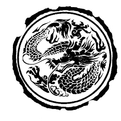Click the blue text above to follow for regular updates!
Thirty-two Damp-Heat Syndromes: Menstrual flow arrives, with strong fever and thirst, delirium and confusion, chest and abdominal pain, or a tongue without coating, pulse slippery and rapid, with the pathogen invading the Ying (nutritive) level. The appropriate treatment includes large doses of: Xijiao (Rhinoceros Horn), Zicao (Lithospermum), Qian Gen (Madder Root), Guanzhong (Cynanchum), Lianqiao (Forsythia), fresh Changpu (Acorus), and Yinhua Lu (Honeysuckle Dew).
Xiong’s Note: People only know the method of Xiao Chai Hu Tang (Minor Bupleurum Decoction) but do not differentiate between the diseases of cold damage and warm heat. Gan’s Note: Qian Gen is not as effective as replacing it with Dan Pi (Moutan Root) or Chi Shao (Red Peony).
Self-Note: Heat entering the blood chamber does not only occur in women. Men can also experience this. It is necessary to cool the blood and detoxify. However, heavy doses are essential for efficacy.
Chapter Note: Zhongjing states that for Yangming disease with blood in the stool and delirium, this indicates heat entering the blood chamber, referring to men. Therefore, there is no mention of menstrual flow.
Qinglong’s Summary: Although this section discusses damp-heat, it has actually transformed into dryness and entered the blood due to the arrival of menstrual flow, leaving the blood chamber empty, with heat invading the blood level. Strong fever, thirst, and symptoms in the Qi level are evident, with confusion and delirium indicating heat disturbing the heart pericardium, chest and abdominal pain, and heat causing blood stasis. Therefore, the treatment should clear both Qi and blood, invigorate blood circulation, resolve stasis, and open the orifices. The herbs used include Xijiao, Zicao, and Qian Gen to cool the blood and detoxify, Lianqiao and Yinhua to clear Qi and dispel heat, and Changpu to open the orifices.
Additionally, Ye Tianshi’s “Discussion on Exogenous Warm Heat” elaborates on heat entering the blood chamber in detail for reference.
Related Articles————————————————————————
Xue Shengbai’s Analysis of Damp-Heat: Damp-Heat Transforming into Dryness and Moving Blood—Heat Toxin Moving Blood and Causing Blood Stasis Syndrome
Xue Shengbai’s Analysis of Damp-Heat: Damp-Heat Intermingled, Deeply Entering the Jueyin Blood Level Syndrome
Xue Shengbai’s Analysis of Damp-Heat: Damp-Heat Entering the Ying Blood—Severe Fluid Deficiency and Delirium Causing Wind Syndrome
Xue Shengbai’s Analysis of Damp-Heat: Heat Entering the Ying Blood—
Xue Shengbai’s Analysis of Damp-Heat: Damp-Heat Entering the Ying Blood—Liver and Kidney Yin Deficiency Causing Wind Syndrome
Xue Shengbai’s Analysis of Damp-Heat: Damp-Heat Entering the Ying Blood—Qi and Blood Both Burning Syndrome
Xue Shengbai’s Analysis of Damp-Heat: Damp-Heat Entering the Ying Blood; Pathogen Entering the Jueyin Heart Pericardium Causing Delirium Syndrome

